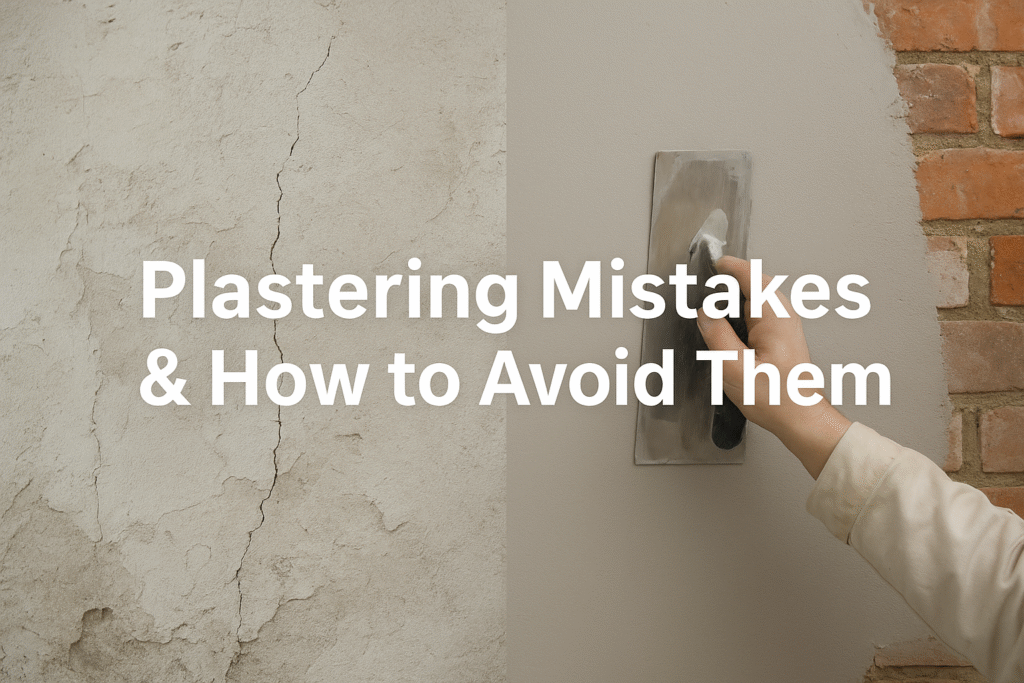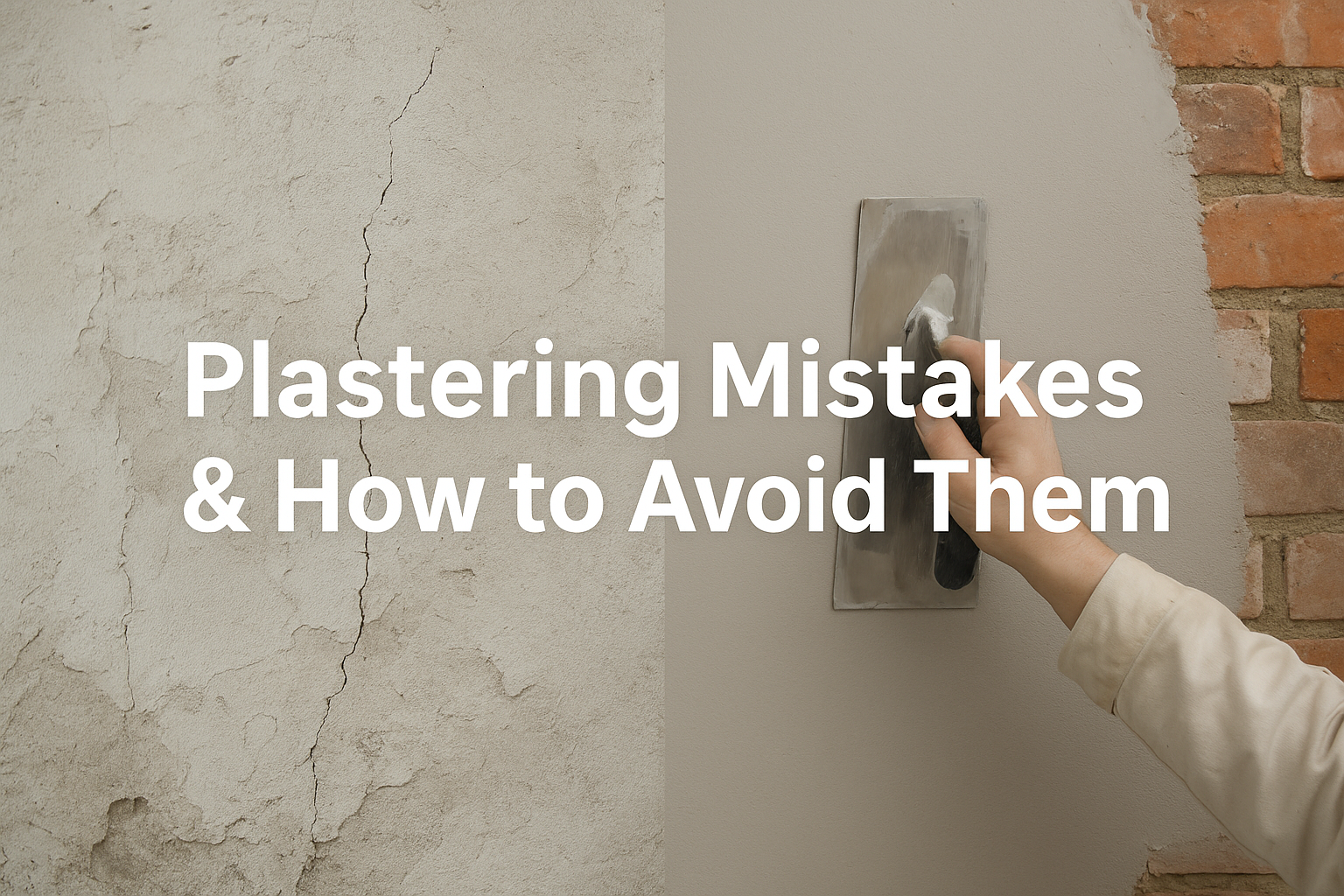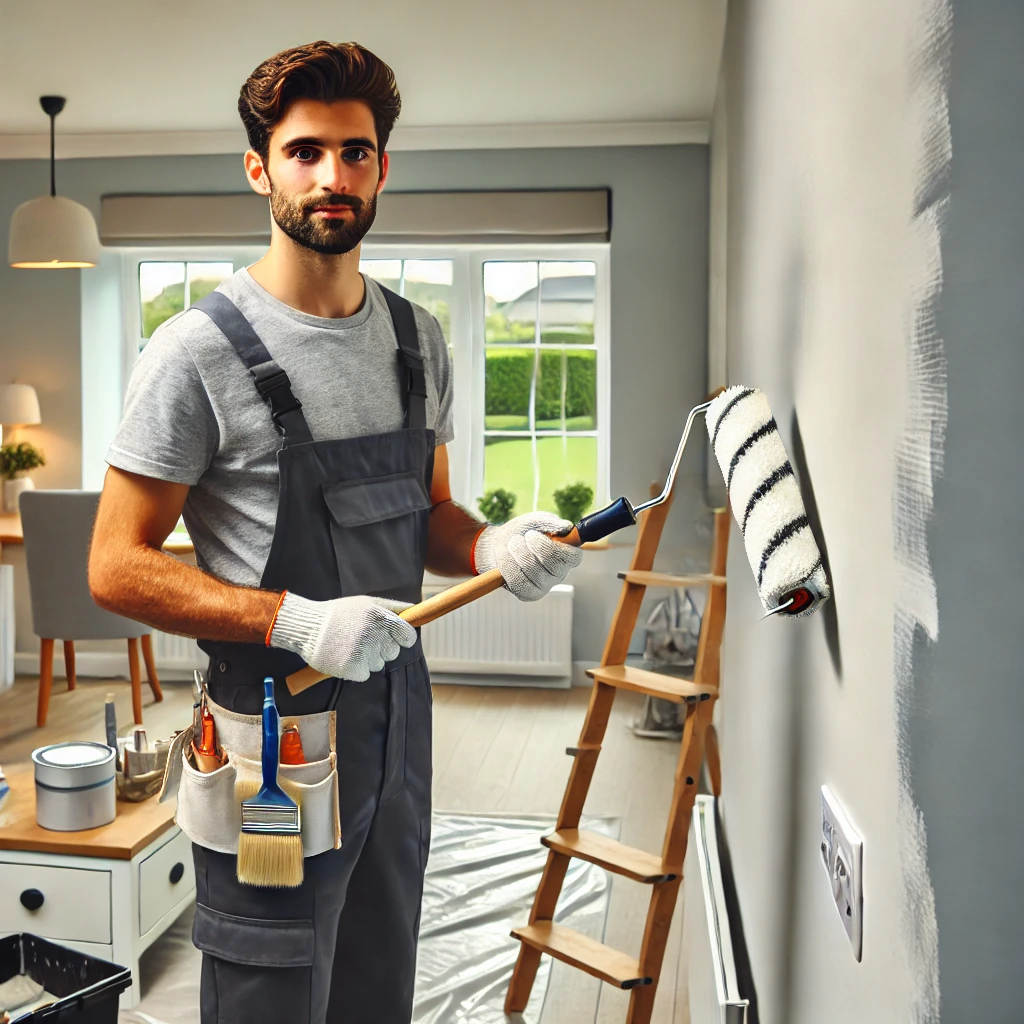Plastering is one of the most important finishing trades in construction. A smooth, durable plaster finish can completely transform the look and feel of a property. But if things go wrong, it can leave you with cracks, uneven surfaces, or plaster that fails altogether. Whether you’re a DIY enthusiast or hiring a professional plasterer in the UK, it pays to understand the common plastering mistakes—and how to overcome them.
1. Not Preparing the Surface Properly
The mistake:
Many plastering problems start with poor preparation. Dust, grease, wallpaper residue, or flaky paint can stop plaster from bonding to the wall.
The fix:
- Always clean and scrape the surface before plastering.
- Apply a bonding agent such as PVA (Polyvinyl Acetate) to regulate suction and create a tacky surface for the plaster to adhere to.
- For tricky surfaces like concrete or smooth painted walls, consider a bonding coat or specialist primer.
2. Plastering Over High Suction Backgrounds Without Priming
The mistake:
Bricks, blocks, and old plaster can be very porous. If plaster is applied directly, the surface will suck the moisture out too quickly. This leads to weak adhesion, rapid drying, and cracks.
The fix:
- Always test suction before starting (a quick spray of water will reveal how quickly it absorbs).
- Apply diluted PVA (around 1:3 ratio with water) as a sealant.
- On highly porous walls, apply multiple coats until the suction is controlled.
3. Plaster Applied Too Thick or Too Thin
The mistake:
A common DIY error is applying plaster unevenly. Too thin, and it won’t cover the wall properly. Too thick, and it risks sagging, cracking, or taking too long to dry.
The fix:
- Keep plaster thickness consistent—generally around 2mm for skimming and 11mm for base coats.
- Build up in layers if needed rather than overloading the trowel.
- Use guides or beading for even application on larger walls.
4. Poor Timing with PVA
The mistake:
Plastering over PVA that is either still wet or completely dry can cause bonding failures.
The fix:
- Apply your second coat of PVA and wait until it’s tacky, not wet.
- Aim to plaster while the wall has that sticky, slightly glossy finish.
5. Overworking the Plaster
The mistake:
Constantly trowelling the plaster can cause surface blistering, dragging, or “fat” (a watery layer) rising to the top.
The fix:
- Work in stages: apply, flatten, allow it to firm up, then polish.
- Don’t rush—timing is key. Learn the “feel” of plaster as it firms up before each pass.
6. Not Allowing Plaster to Dry Properly
The mistake:
Painting or decorating too soon after plastering can trap moisture, leading to peeling paint, discolouration, and damp patches.
The fix:
- Allow plaster to dry fully—usually 7–10 days for skim coats and longer for backing coats.
- Look for colour changes: fresh plaster dries from dark brown/pink to a lighter shade.
- Use breathable mist coats before applying emulsion paint.
7. Ignoring Cracks and Shrinkage
The mistake:
Hairline cracks, shrinkage, or delamination are often ignored until they worsen. These issues can stem from poor mixing, over-thinning, or incorrect drying conditions.
The fix:
- Mix plaster to manufacturer’s instructions—don’t guess ratios.
- Avoid extreme temperatures (too hot = rapid drying, too cold = poor set).
- If cracks appear, cut them out slightly, fill with fresh plaster or filler, and sand smooth before decorating.
8. Skipping Professional Help
The mistake:
Many UK homeowners attempt DIY plastering without the right tools, training, or patience—only to end up paying more to have it redone.
The fix:
- For small patch jobs, DIY is fine.
- For full rooms, ceilings, or decorative finishes, hire a qualified plasterer. The upfront cost saves money and stress in the long run.
Plastering is as much an art as it is a trade
While it’s tempting to dive straight in, proper preparation, timing, and technique make the difference between a professional finish and a disaster wall. By avoiding these common plastering mistakes—and knowing how to overcome them—you’ll achieve a smooth, long-lasting result.
If you’re in the UK and unsure whether to tackle plastering yourself, consider bringing in a local plastering expert if you are in Bournemouth, Poole or Christchurch give LA Plastering a call. A professional finish not only looks better but also adds value to your home.


